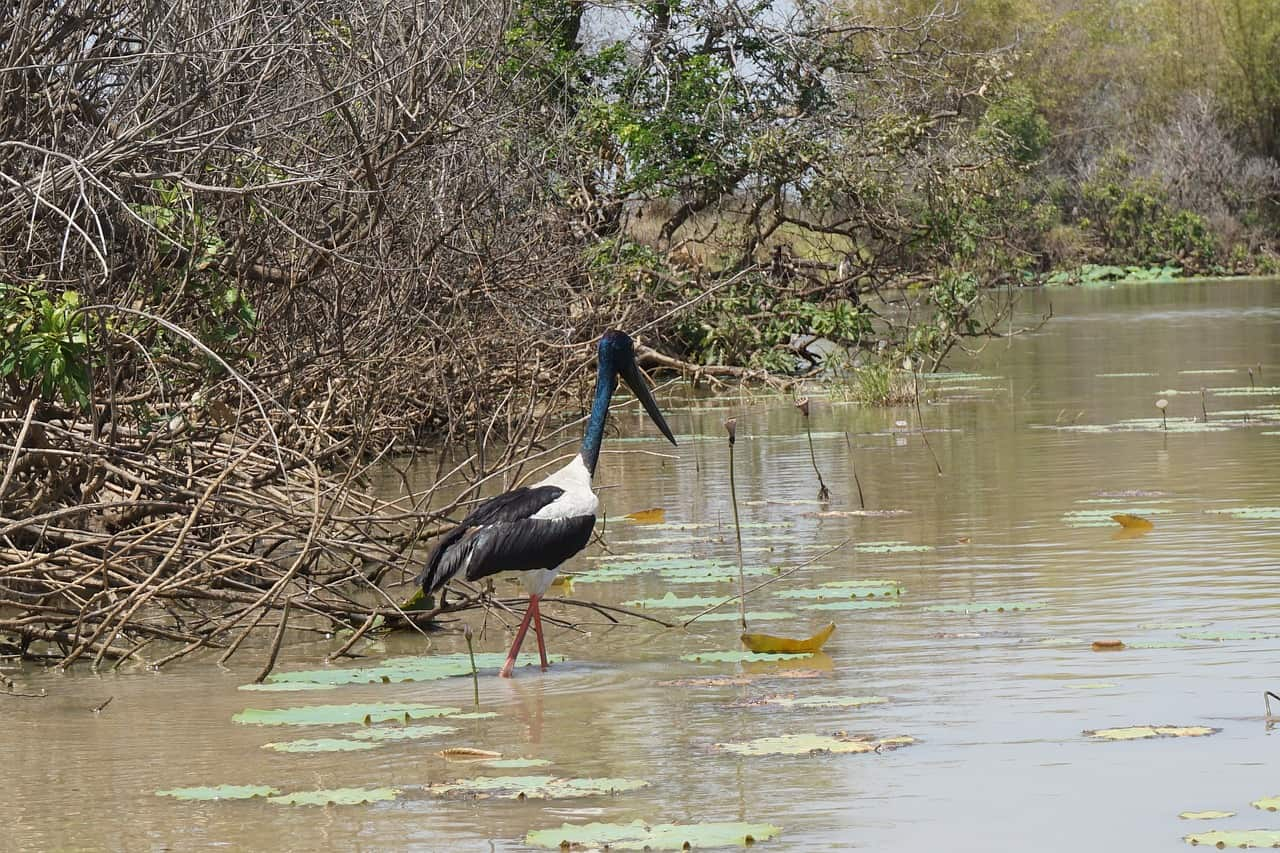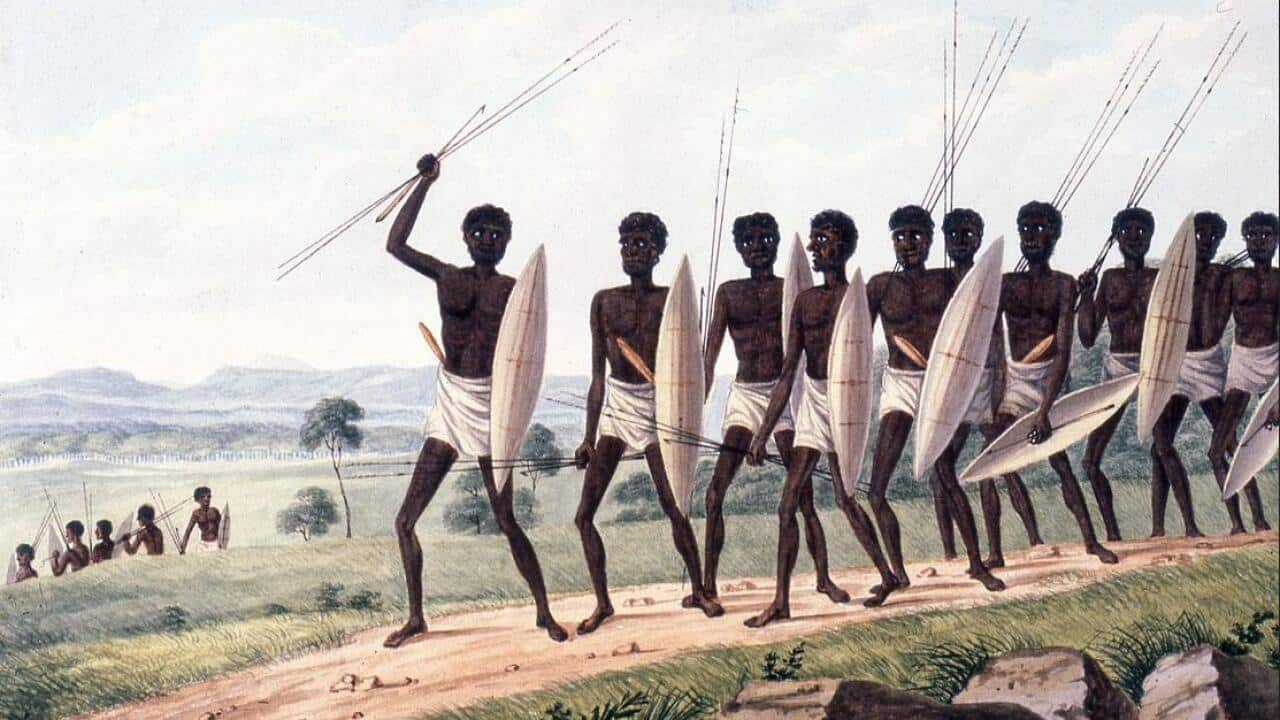If the sentence, After a hard day's Yakka, the man took off his Akubra to get a better look at the Wombat on the other side of the Billabong, makes sense to you —you mightn't have realised, but you know four different Aboriginal language words (heavily Anglicised though).
Yakka = Yuggera
Canberra = Ngunnawal
Akubra = Biripi*
Wombat = Dhurug
Billabong = Wiradjuri
Aboriginal languages frequent our mainstream English vernacular; "Dingo", "yabby", "Bondi", "kangaroo" and even the iconic call-out, "Cooee!"
However, many similar sounding or non-European style words are commonly mistaken as being from the same 'mob' (especially those associated with First Nations' culture). Here's a few...
Arnhem

Arnhem Land, NT (Wikimedia CC) Source: Wikimedia CC
This means that unlike the rest of Australia, this large tropical wilderness is neither owned by The Crown nor public land. This scheme helps protect and preserve the privacy and culture of the local people, , who have lived on and cared for the land for tens of the thousands of years.
With Aboriginal people making up of the population, and its roots deeply grounded in Indigenous activity, many assume the name 'Arnhem' was given by its traditional land owners.
'Arnhem', is actually a Dutch word and comes from the visit of Captain William Van Colster of the Dutch East India Company in the 1623. Van Colster sailed into the Gulf of Capentaria (a shallow sea named after a Dutch Governor-General) on his vessel, 'Arnhem', which was named after the city in the Netherlands. In 1644, Dutch explorer Abel Tasman named the area 'Arnhem Land' after the ship's arrival decades prior. In the 1700s, Dutch maps sited the location as "Terre d Arnhem".
In 1931, the Aboriginal Reserve was declared "Arnhem Land", and as of 1936 the name appeared on modern maps.
Goanna

Goanna, North Stradbroke Island. QLD. (Flickr CC-2.0) Source: Flickr CC-2.0
These large predatory lizards play a strong role in Indigenous culture, commonly depicted in art, songlines, totems, dreaming stories (and ). They have also been hunted as food and harvested for oil.
The goanna has many different translations across various Aboriginal languages: "wardapi" (Warlpiri), "thulii" (Gamilaraay), "gurudhaany" (Wiradjuri) and "ngamahl" (Bundjalung). However, the mainstream word 'goanna' to derive from the Spanish word 'iguana', where European settlers likened the reptile to the South American lizards.
Cockatoo

Sulphur Crested Cockatoo (Flickr CC by NC-ND 2.0) Source: Flickr CC BY-NC-ND 2.0
"Cockatoo", however, is thought to come from the Dutch word "kaketoe", which is a Eurocised adaptation from the Malay word, "kakatua". This would have been adopted during the spice trade and the Dutch's time in the Indonesian archipelago in the 17th Century. including, cacato, cockatoon, crockadore, cocatores appear in travel writing around this time, but "Cockatoo" was settled on in 1850.
The common cockatoo species, the galah (found only in Australia) , of the Gamilaraay language.
Nullarbor

Nullarbor Plain sign (Flickr CC BY 2.0) Source: Flickr CC BY 2.0
"Nullarbor" was named in 1867 by Government surveyor Edmund Alexander Delisser. He used the Latin words, 'nullus arbor' meaning "no trees", which reflected the flat, arid, limestone country that spread across South Australia and Western Australia.
Jabiru

Jabiru, Northern Territory (Pixabay CC0) Source: Pixabay CC0
Built in 1982, the very small town of Jabiru, NT mainly serves as an accommodation hub for the nearby Ranger Uranium Mine and Kakadu Park tourists. Aboriginal people make up near 25 per cent of its residents and have established a thriving arts and culture tourism industry.
Balanda

An illustration of Dirk Hartog during a Dutch exploration of Australia, 1616 (SBS) Source: SBS
The word "Balanda" was used by the Macassan traders, used to describe the Dutch by being an accented translation of "Hollander". The Macassan frequented the Top End years before Britain settled in the south, where some of their colloquialisms were adopted by Aboriginal people.
Emu

Emu (AAP) Source: AAP
For a long time Europeans classified the flightless bird with its close relatives, the cassowary (an adaptation from the Malay word, "kesuari"), and was first documented in the English language as the "New Holland Cassowary" in Arthur Phillip's 1789 journals.
There are two theories how "Emu" was adopted —both derive from South America. , is from the Portuguese word "ema", meaning 'large bird'. Second, is the , a large flightless bird that looks remarkably similar to the Australian emu.
Echidna

Echidna (AAP) Source: AAP
However, it gets its English name from a character in Greek mythology. "Echidna" is 'the mother of monsters'. She was a half-woman, half-snake who lived alone in a cave. As the spiney ant-eater had the qualities of both, mammals and reptiles, echidnas were named under rather... unflattering circumstances.
Didgeridoo

Various types of didgeridoo (Wikimedia Commons) Source: Wikimedia Commons
While the didgeridoo is authentically Aboriginal, like the word "Dreamtime", its name as a dominating Anglicisation upon Indigenous culture. However, over time some Aboriginal groups have somewhat reclaimed the word, making it synonymous within an Indigenous context.
"Didgeridoo" first appeared in Australian dictionaries in 1919. Linguists believe Irish Gaelic origins, stemming from the word dúdaire (pronounced 'doodjerra' or 'dooderreh'), meaning horn-blower and, controversially, a pipe smoker.
Gammin

'Gammin News' segment on teen program, 'Grounded' (NITV) Source: NITV
Very much adopted by Australia's Indigenous people, this term originates from slang, similarly meaning to 'pretend' or to swindle someone. Relating to pork (gammon), it's suggested the term also influenced the synonymous phrases "pulling your leg" or "hamming it up".
... And ahhh, this one

Source: Giphy
... An honourable mention

Brumbies at Yarrangobilly (Flickr CC BY-NC 2.0) Source: Flickr CC BY-NC 2.0
However, the brumby is just a feral horse with a fancier name (a name with Gaelic origins btw). Like other introduced species such as foxes and rabbits, brumbies ravage the landscape and damage our unique ecosystem with their population growing at increasing rates.
*Word of mouth crediby suggests this, however, there is no documented evidence 'Akubra' is a Biripi word.












